A castle that seems to come out of a fairy tale, on a hill overlooking the Po River from above, in the middle of the Monferrato hills. It is the Castle of Gabiano, a historical monument of extraordinary importance that, in addition to its imposing walls, the view of the great river and the fine fruits of the surrounding vineyards, captures the imagination of every visitor for its labyrinth located in the heart of the castle park.
Gabiano Castle has a very ancient history. You can find it mentioned as early as the 8th century (as cortem magnam nomine Gabianam), it has been the scene of dynastic disputes and transitions that shaped its appearance and role in the region. Over the centuries, the castle belonged to the Marquises of Monferrato (who received it as a gift in 1164 from Frederick Barbarossa), then it belonged to the Gonzagas, and finally in 1622 it passed to the Genoese nobleman Agostino Durazzo, who transformed it into an aristocratic residence with a distinctive character. Durazzo had received it as compensation for various debts that the Mantuan court had contracted with his family, and even today Gabiano Castle is owned by a Genoese nobleman, Giacomo Cattaneo Adorno Giustiniani, who in recent years has continued the renovation and enhancement of the castle.
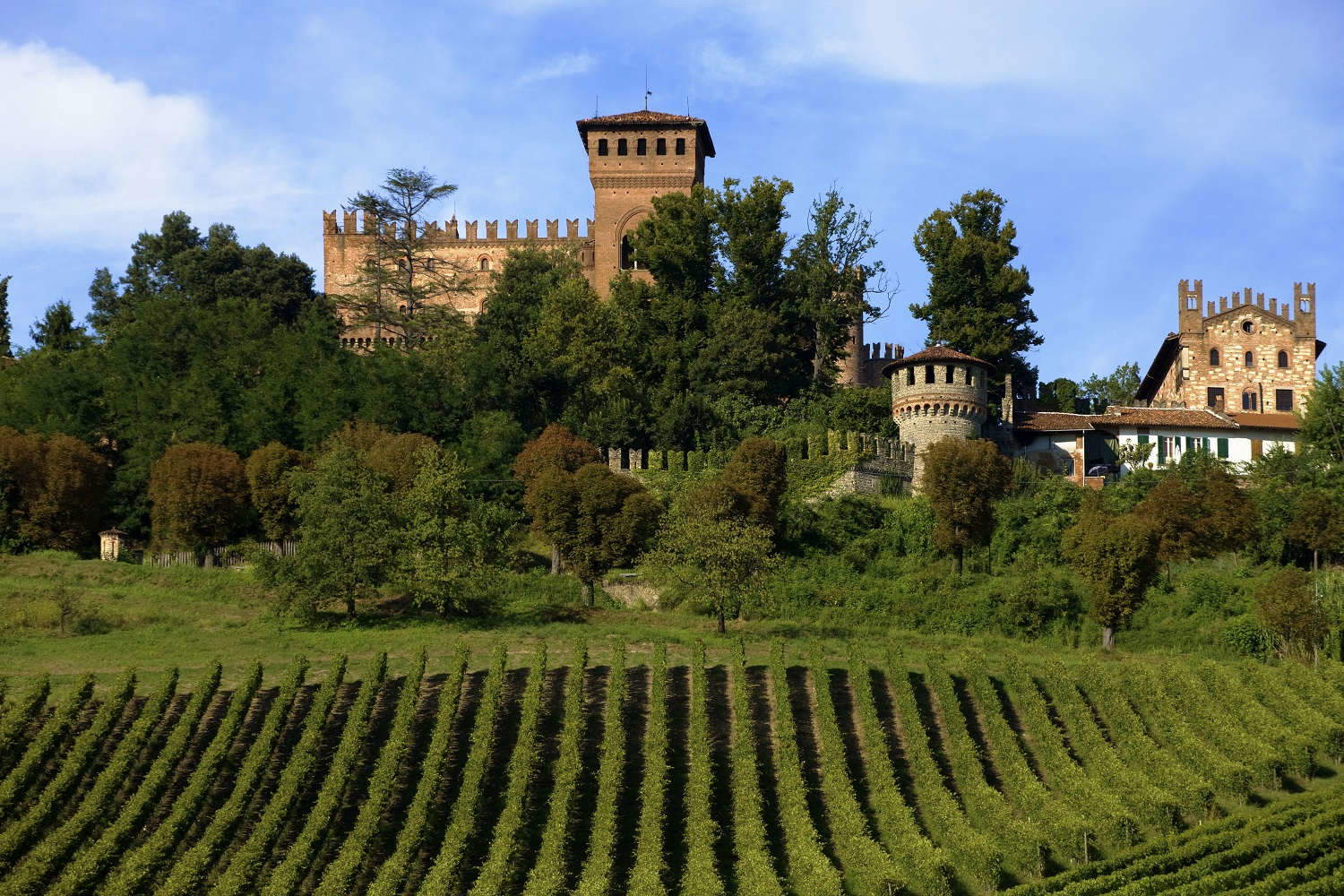
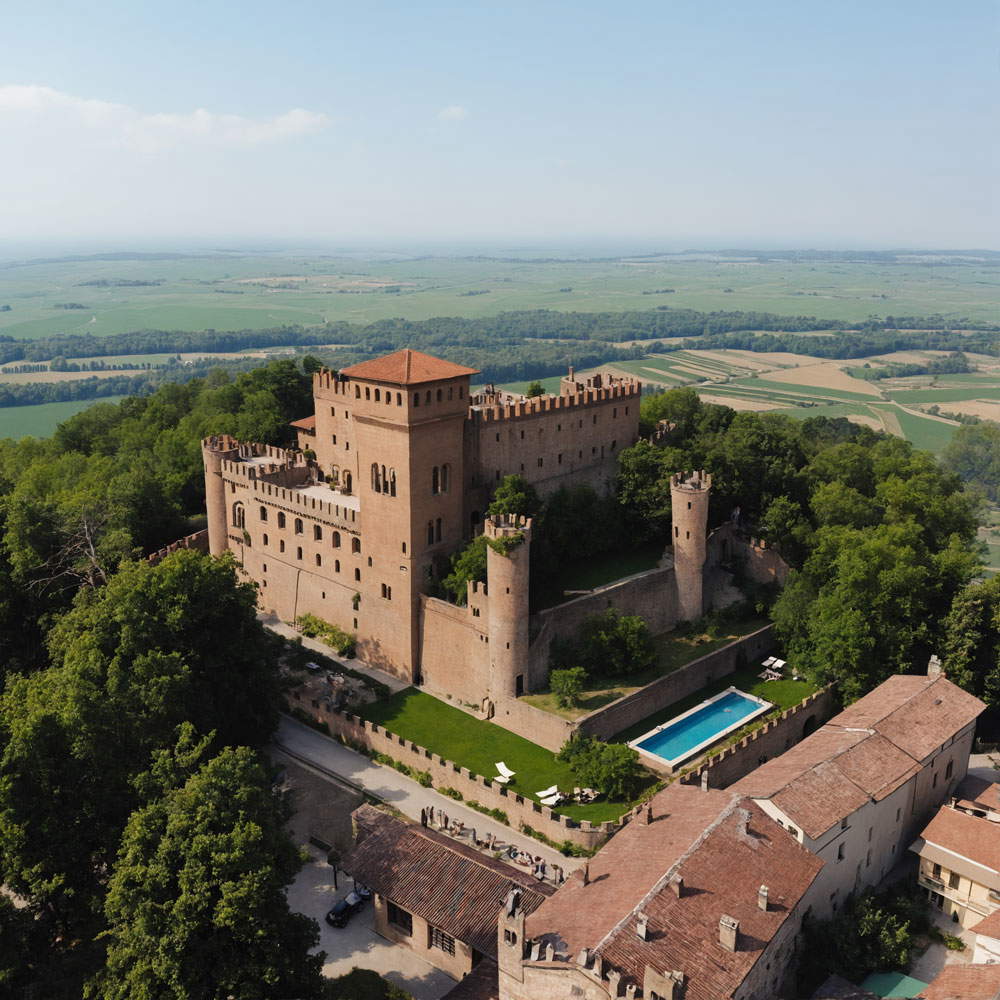
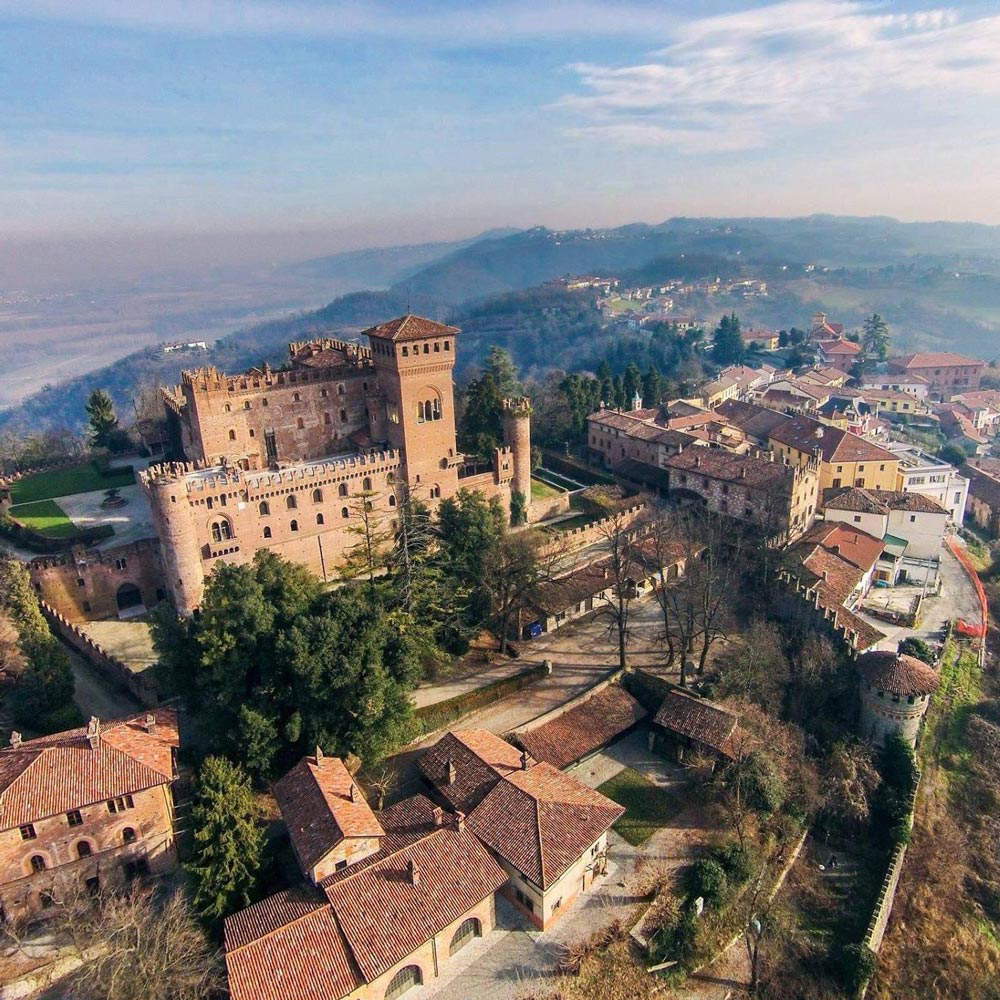
The castle labyrinth is a more recent creation, commissioned in the 1930s by Marchesa Matilde Durazzo Pallavicini and designed by architect Lamberto Cusani. Part of the castle restoration project, the labyrinth was conceived as a symbolic and decorative element, carefully inserted into the natural setting of the park. Its boxwood hedges draw a complex web of geometric paths, inviting an intimate and reflective exploration.
Labyrinths, in their traditional sense, have always been symbols of inner search and transformation. At Gabiano Castle, the labyrinth represents an example of dialogue between man and nature: the rigid geometries of the hedges seem to want to bring order to the natural chaos, seeming to evoke the human attempt to dominate and interpret the surrounding world. Walking through the labyrinth thus becomes an almost meditative experience: such it must have been according to Matilde Durazzo Pallavicini. Walking its paths recalls ancient mythological narratives, such as Theseus’ journey through the labyrinth of Crete, but also more modern reflections on the path of life, made up of choices, obstacles and goals. The heart of the labyrinth, its center, becomes a metaphor for the attainment of knowledge or interioe peace.
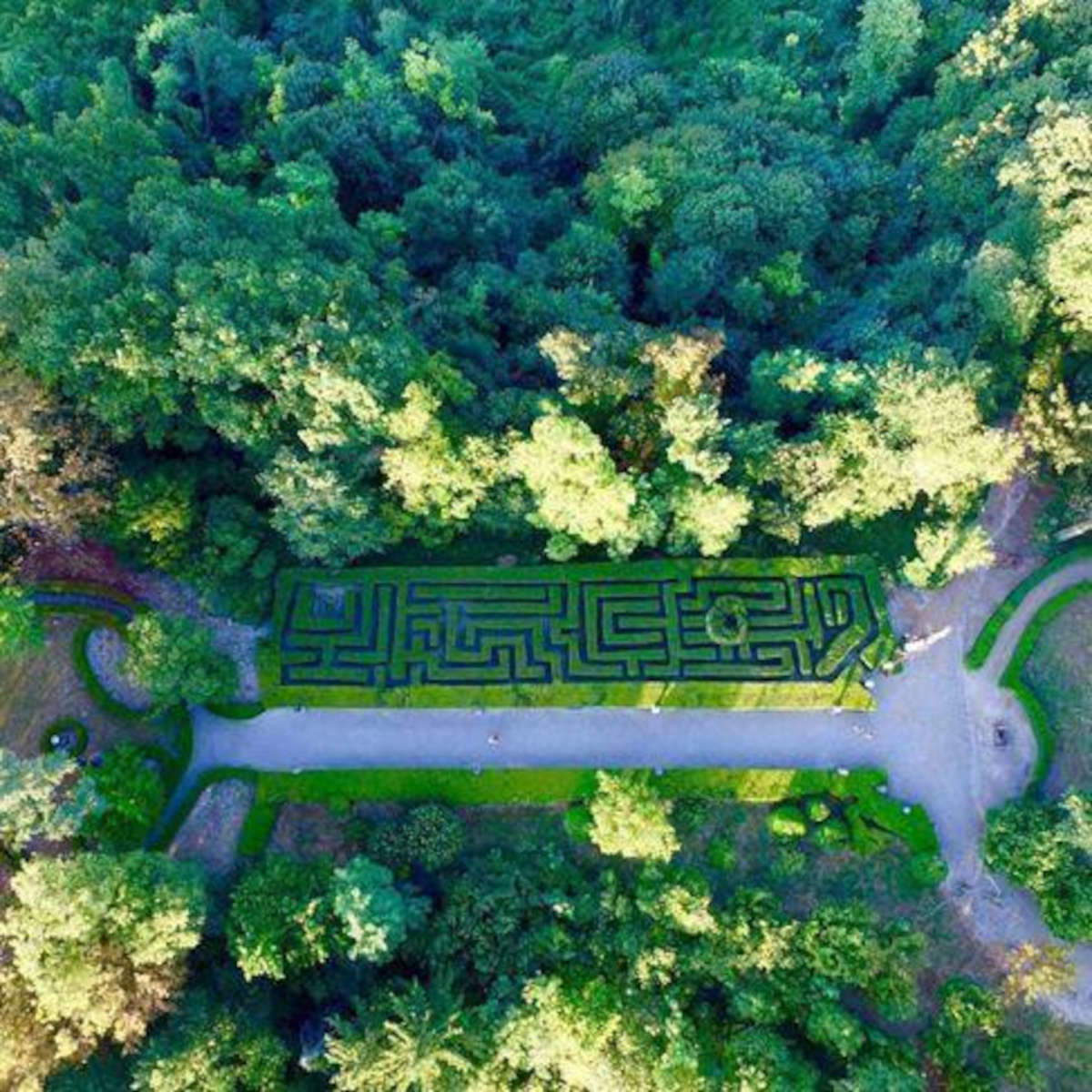
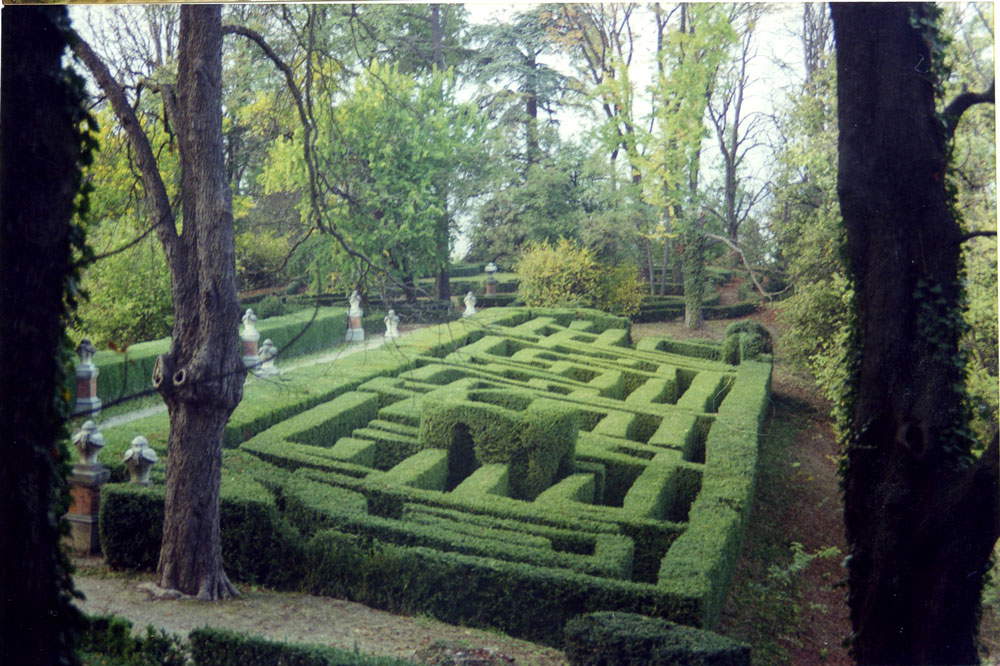
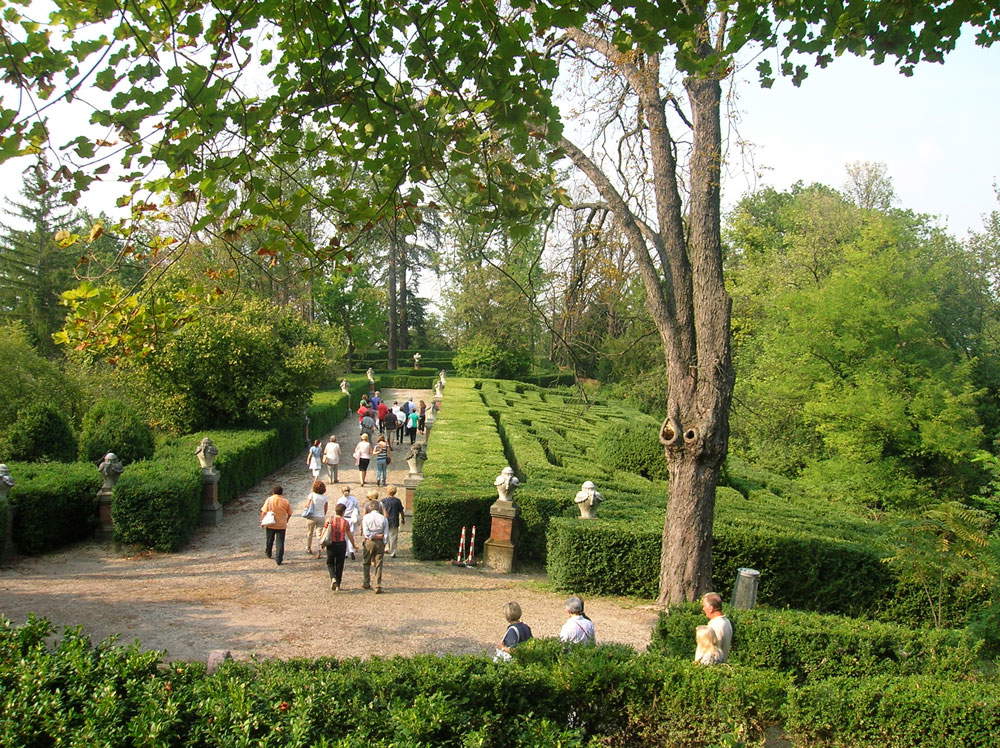
The decision to place the labyrinth in the center of the park is not accidental: it becomes the visual and symbolic centerpiece of the entire complex, inviting visitors to explore and reflect. “The location of the labyrinth in the heart of the park,” the castle guidebook explains, “emphasizes the contrast between the rigid and geometric lines of the castle layout and the naturalness of the park, recalling the medieval concept of the forest as a natural labyrinth (park) and labyrinth as an artificial forest, where nature is strictly manipulated and controlled by man.”
The distinguishing feature of this labyrinth, beyond its neo-Gothic style, is the contrast between its regular, longitudinally developed layout and the park laid out in accordance with the passion for English gardens of the early 20th century: order and disorder, therefore, are paired, the artificial labyrinth and the natural forest labyrinth amplifying the sense of disorientation.
Gabiano Castle, now a luxury lodging facility, is not only a historic monument but also a vital center for Monferrato culture and food and wine. Its cellars, which have medieval origins, produce fine wines, the fruit of the grapes that grow in the surrounding vineyards. A visit to the castle, which opened to the public for the first time in July 2024, offers the opportunity to taste these wines in a setting that blends the site’s thousand-year history with a modern vision. And the labyrinth of Gabiano Castle is a place that enchants and invites reflection, an element of the past that speaks to the present, that speaks to the intimacy of anyone who wants to walk through it.
 |
| The labyrinth overlooking the Po: the Castle of Gabiano |
Warning: the translation into English of the original Italian article was created using automatic tools. We undertake to review all articles, but we do not guarantee the total absence of inaccuracies in the translation due to the program. You can find the original by clicking on the ITA button. If you find any mistake,please contact us.